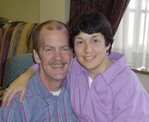who wade across Shibuya Crossing daily
Over crowded. Jam-packed. Teeming. Swarming. Busy. Congested. Crammed full. Packed out. Suffocating. All of these adjectives and others could be used to describe Tokyo, the city in which we’ve lived since 2003. And did we say it’s heaving with people here?
Whatever the verbal portrait, however, words just can’t convey the experience of being in Japan’s most populated city: 12.5 million at night and14.6 million by day, when commuters from surrounding areas fill the trains beyond capacity to make their way dutifully into the city for work. Largest of the nation’s 47 prefectures in population, Tokyo is its third smallest in geography, accounting for the dubious honor it holds as Japan’s most densely populated location (2,215 people per square mile). But, as we said, words don’t do it justice. You just have to experience it.
Which is what we did on Sunday afternoon when we went to Shibuya, one of the major downtown areas, only a 15-minute train ride from us. Shibuya Station itself was busy enough to make me wonder whether we should have taken out travelers insurance. But exiting the station and coming face-to-face with Shibuya Crossing was even riskier, just a few steps to be sure, but definitely not for the faint-hearted. Three million people—or one-fourth of all of Tokyo—cross the street in all directions at this crisscross intersection made famous in Bill Murray’s 2003 movie, “Lost in Translation.” That’s a swarm of 1,500 people traveling every time the light changes! And there we stood, trying to take a picture in the midst of it all.
Task finally accomplished, I stepped up out of the fray and positioned myself on the edge of a large concrete planter where I could get a good view and comprehend all I was seeing. It was then that I began to see faces. Beforehand, there was only a mass, a sea of humanity that didn’t seem human at all. But from my elevated perch, I began to see—really see—for the first time: the pleasant man who looked up and smiled, prompting me to return his greeting and enjoy his jaunty gray felt hat with the feather stuck in its brim; an elderly couple, she bent by osteoporosis, he gallantly defending her as they navigated the treacherous crossing; the cute little boy with contemplative eyes being piggybacked in a child carrier; the teenager with her shaggy-cut, turquoise-dyed hair, a red and black plaid scarf wrapped around her neck; the surprising young man, his hair arranged in a mohawk of six-inch red, black, and gray spikes, his black jeans so weighted with chains I marveled that he could walk or even keep his pants up.
I recalled Bernie’s comment as we’d eaten lunch a few minutes earlier at Yoshinoya, a Japanese fast-food rice bowl eatery, “How is it possible to reach some of these for Christ?” And I wondered—if Jesus had been standing there instead of me, would he have wept as he did over Jerusalem? Surely.
Whatever the verbal portrait, however, words just can’t convey the experience of being in Japan’s most populated city: 12.5 million at night and14.6 million by day, when commuters from surrounding areas fill the trains beyond capacity to make their way dutifully into the city for work. Largest of the nation’s 47 prefectures in population, Tokyo is its third smallest in geography, accounting for the dubious honor it holds as Japan’s most densely populated location (2,215 people per square mile). But, as we said, words don’t do it justice. You just have to experience it.
Which is what we did on Sunday afternoon when we went to Shibuya, one of the major downtown areas, only a 15-minute train ride from us. Shibuya Station itself was busy enough to make me wonder whether we should have taken out travelers insurance. But exiting the station and coming face-to-face with Shibuya Crossing was even riskier, just a few steps to be sure, but definitely not for the faint-hearted. Three million people—or one-fourth of all of Tokyo—cross the street in all directions at this crisscross intersection made famous in Bill Murray’s 2003 movie, “Lost in Translation.” That’s a swarm of 1,500 people traveling every time the light changes! And there we stood, trying to take a picture in the midst of it all.
Task finally accomplished, I stepped up out of the fray and positioned myself on the edge of a large concrete planter where I could get a good view and comprehend all I was seeing. It was then that I began to see faces. Beforehand, there was only a mass, a sea of humanity that didn’t seem human at all. But from my elevated perch, I began to see—really see—for the first time: the pleasant man who looked up and smiled, prompting me to return his greeting and enjoy his jaunty gray felt hat with the feather stuck in its brim; an elderly couple, she bent by osteoporosis, he gallantly defending her as they navigated the treacherous crossing; the cute little boy with contemplative eyes being piggybacked in a child carrier; the teenager with her shaggy-cut, turquoise-dyed hair, a red and black plaid scarf wrapped around her neck; the surprising young man, his hair arranged in a mohawk of six-inch red, black, and gray spikes, his black jeans so weighted with chains I marveled that he could walk or even keep his pants up.
I recalled Bernie’s comment as we’d eaten lunch a few minutes earlier at Yoshinoya, a Japanese fast-food rice bowl eatery, “How is it possible to reach some of these for Christ?” And I wondered—if Jesus had been standing there instead of me, would he have wept as he did over Jerusalem? Surely.

